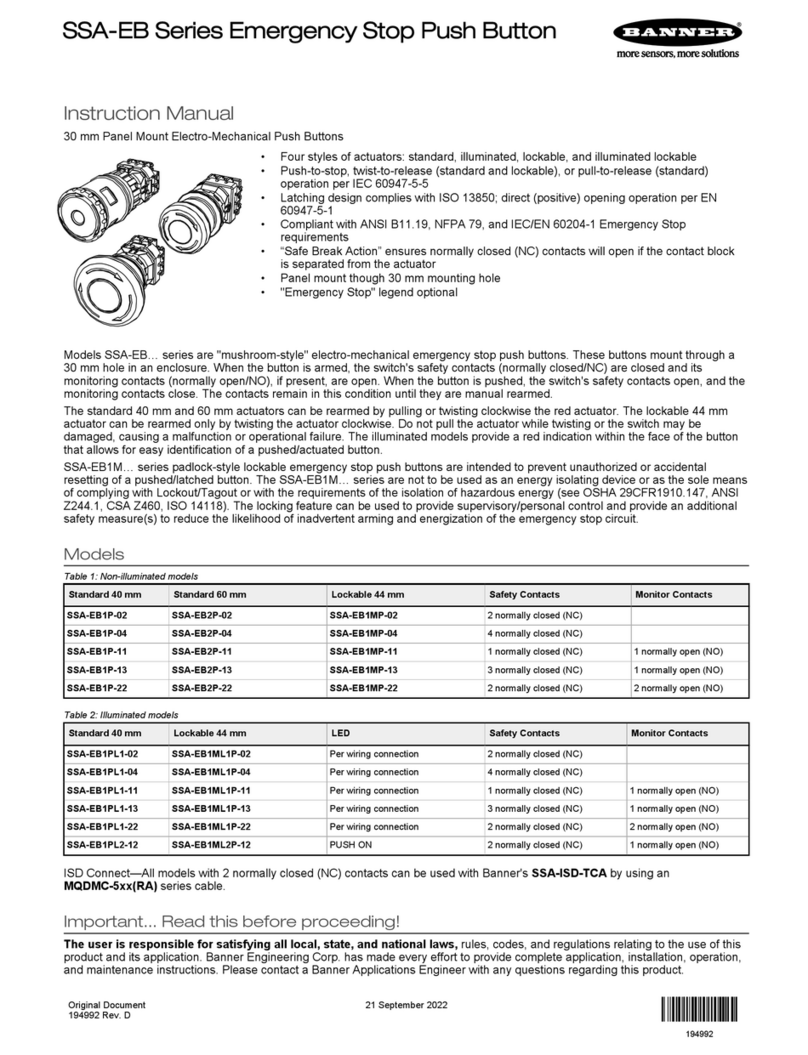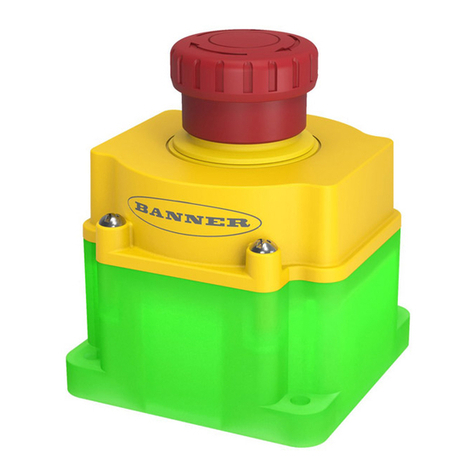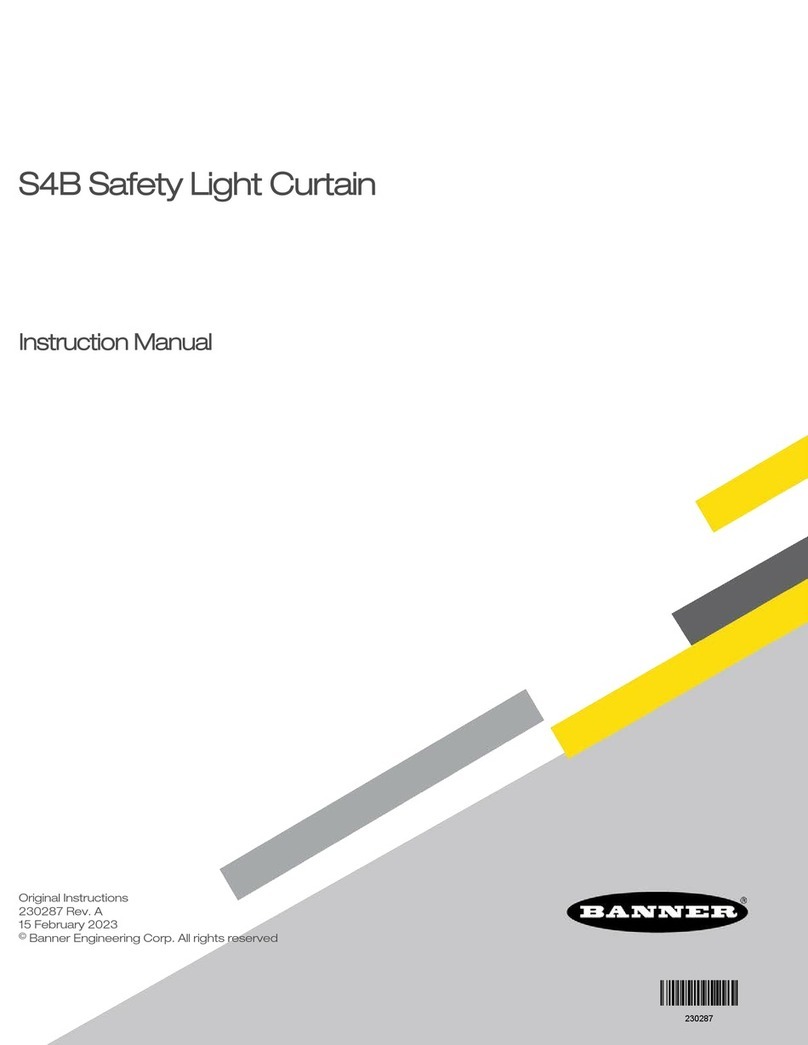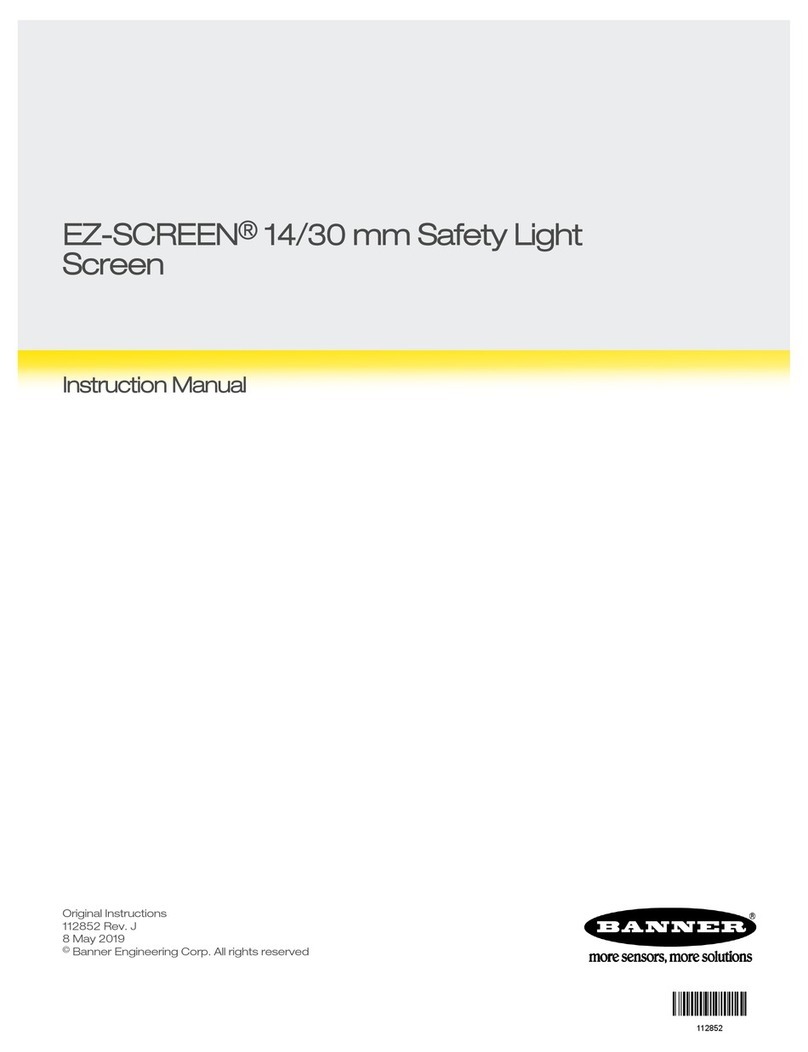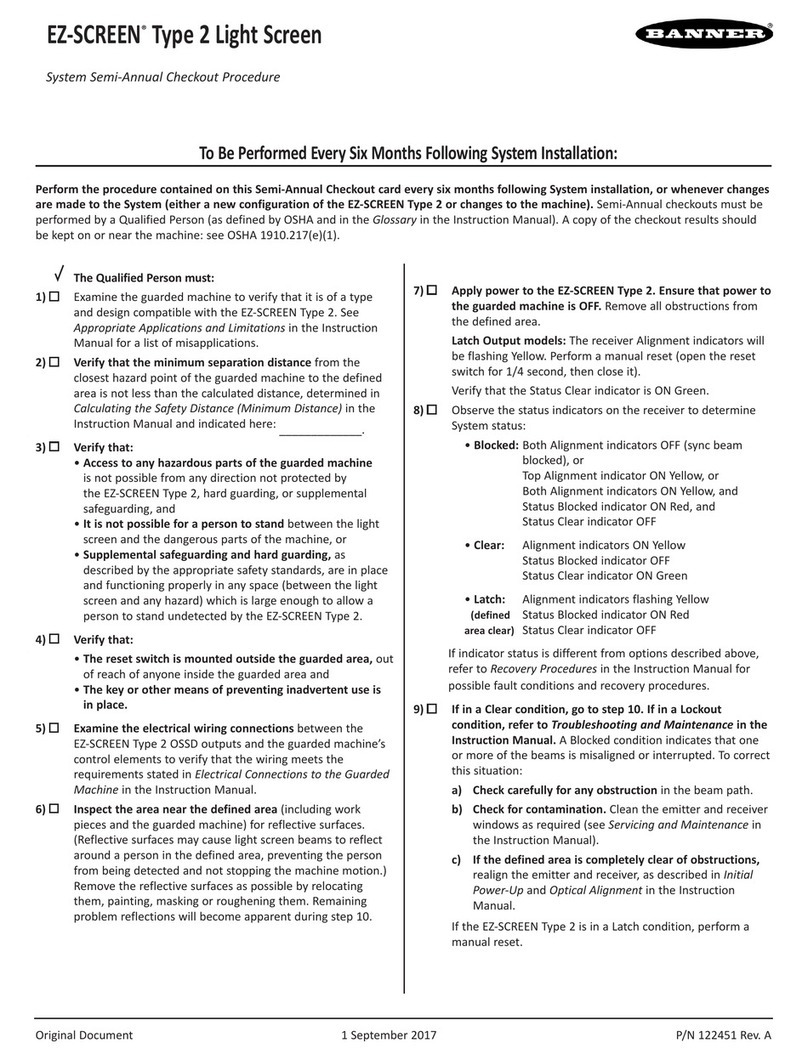
3
5.9.3 Machine Primary Control Elements (MPCE) and External Device Monitoring (EDM) Input....................................................... 44
5.10 Auxiliary (Aux.) Output ...................................................................................................................................................................... 46
5.11 Remote Test Input ............................................................................................................................................................................. 46
5.12 Preparing for System Operation ....................................................................................................................................................... 46
5.13 Sensor "Swapability" .......................................................................................................................................................................... 46
5.14 Generic Wiring Diagrams ................................................................................................................................................................... 47
5.14.1 Wiring FSD ............................................................................................................................................................................... 51
Chapter 6 Operating Instructions
6.1 Security Protocol ................................................................................................................................................................................ 53
6.2 System Configuration Settings ............................................................................................................................................................ 53
6.2.1 Access the Configuration Panel ................................................................................................................................................. 54
6.2.2 Inverted Display ......................................................................................................................................................................... 55
6.2.3 Selectable Trip/Latch Outputs .................................................................................................................................................... 55
6.3 Reset Procedures ................................................................................................................................................................................ 55
6.3.1 Manual Resets and Lockout Conditions .................................................................................................................................... 56
6.3.2 Resetting the Receiver ............................................................................................................................................................... 56
6.3.3 Resetting the Emitter .................................................................................................................................................................. 56
6.4 Status Indicators.................................................................................................................................................................................. 56
6.4.1 Emitter Status Indicators............................................................................................................................................................. 57
6.4.2 Receiver Status Indicators.......................................................................................................................................................... 58
6.4.3 Status Indicators for Cascaded Applications ............................................................................................................................. 59
6.5 Normal Operation ................................................................................................................................................................................. 63
6.5.1 System Power-Up ...................................................................................................................................................................... 63
6.5.2 Run Mode ................................................................................................................................................................................. 64
6.6 Periodic Checkout Requirements ........................................................................................................................................................ 64
Chapter 7 Checkout Procedures
7.1 Schedule of Checkouts ........................................................................................................................................................................ 65
7.2 Commissioning Checkout .................................................................................................................................................................... 66
7.3 Shift/Daily Checkout ............................................................................................................................................................................ 67
7.4 Semi-Annual (Six-Month) Checkout .................................................................................................................................................... 67
Chapter 8 Cascade
8.1 Overview of Cascading ........................................................................................................................................................................ 69
8.2 System Components and Specifications .............................................................................................................................................. 70
8.2.1 Cascadeable Emitter and Receiver Models with 14 mm Resolution ........................................................................................ 70
8.2.2 Cascadeable Emitter and Receiver Models with 30 mm Resolution ........................................................................................ 71
8.3 Receiver Display .................................................................................................................................................................................. 72
8.4 Determining Interconnect Cable Lengths ............................................................................................................................................ 72
8.5 Response Time for Cascaded Light Screens ....................................................................................................................................... 74
8.5.1 Individual Response Time and Separation Distance ................................................................................................................. 75
8.5.2 Overall Response Time and Safety (Minimum) Distance ......................................................................................................... 76
8.5.3 Cascade Configuration vs. Response Time ............................................................................................................................... 76
8.6 Cascaded Sensor Configuration Settings ........................................................................................................................................... 77
8.6.1 Configure for Cascaded Operation ............................................................................................................................................ 78
8.7 Emergency Stop Buttons and Rope/Cable Pulls ................................................................................................................................. 79
8.7.1 E-Stop Switch Requirements (Positive-Opening) ...................................................................................................................... 80
8.8 Interlock Switches in Cascaded Systems............................................................................................................................................. 80
8.8.1 Interlock Guarding Requirements ............................................................................................................................................. 81
8.8.2 Positive-Opening Interlocking Safety Switches ......................................................................................................................... 81
8.8.3 Monitoring Series-Connected Positive-Opening Safety Switches ............................................................................................. 82
Chapter 9 Troubleshooting
9.1 Troubleshooting and Lockout Conditions ........................................................................................................................................... 85
9.2 Recovery Procedures ........................................................................................................................................................................... 85
9.2.1 Emitter and Receiver Reset........................................................................................................................................................ 85
9.2.2 Advanced Diagnostics .............................................................................................................................................................. 86
9.2.3 Receiver Error Codes ................................................................................................................................................................ 86
9.2.4 Emitter Error Codes ................................................................................................................................................................... 88
9.3 Test Mode for 5-Pin Emitters ............................................................................................................................................................... 88
9.4 Electrical and Optical Noise ................................................................................................................................................................. 89
9.4.1 Check for Sources of Electrical Noise ....................................................................................................................................... 89
9.4.2 Check for Optical Noise Sources................................................................................................................................................ 89
Chapter 10 Accessories
10.1 Cordsets ........................................................................................................................................................................................... 91
10.1.1 Single-Ended (Machine Interface) Cordsets (One Cable for Each Emitter and Receiver) ...................................................... 91














